Cast Hooks and Casting Tape — Hoof Cast
go to the online shopHoof Cast — Immobilization and Protection for a Diseased and/or Injured Hoof
Our long-term goal is to have a suitable horseshoe in our range for almost every horse and application.
A healthy and stable hoof is crucial for the well-being and performance of a horse. However, sometimes it can happen that the hoof exhibits injuries, abscesses, or other problems that require special treatment.
The field of therapeutic shoeing is very versatile; often, individualized solutions are needed. The use of casting tape in horseshoeing provides flexibility in adapting to individual needs. It can be used to provide temporary protection and support solutions or as part of a more comprehensive hoof treatment. The application of a cast shoe requires appropriate expertise. General statements about exactly when to use a hoof cast are difficult to make. In general, however, it can be said that a hoof cast can be useful if the horn capsule should be completely immobilized and if no nails can be used for fixating the hoof protection.
The ultimate decision whether to use a hoof cast, or not, should always be made by the skilled farrier on-site, potentially in cooperation with a veterinarian.
When opting for a protective and immobilizing hoof cast, our cast hooks along with a composite horseshoe and the suitable casting tape might be a good choice.
Hoof Cast — Cast Shoe Combined of Cast Hooks and Casting Tape — Photos
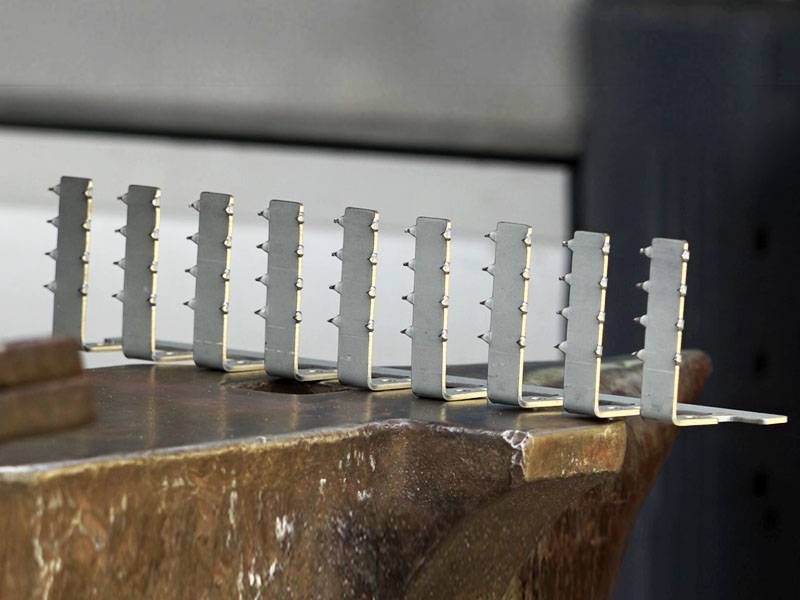
The cast hooks allow for attaching a composite horseshoe to the hoof, using a casting tape.
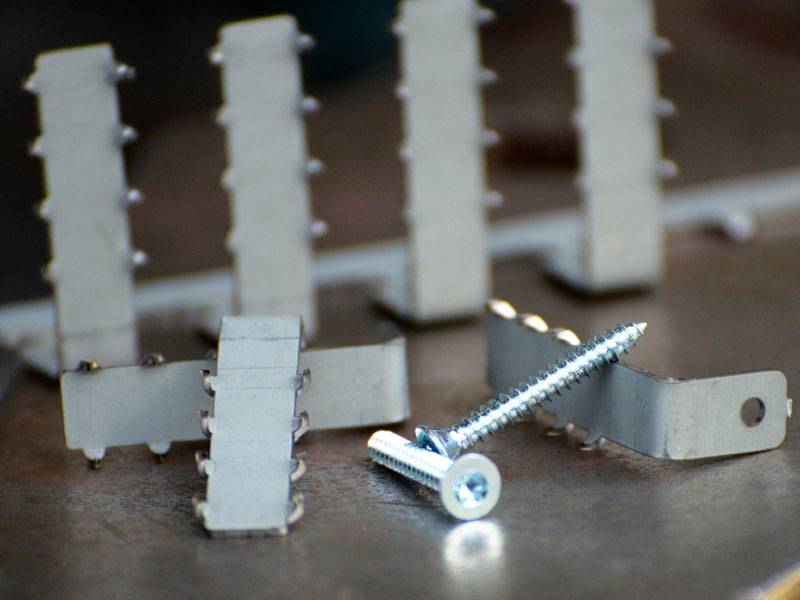
To attach the cast hooks to the horseshoe, appropriate screws are needed.
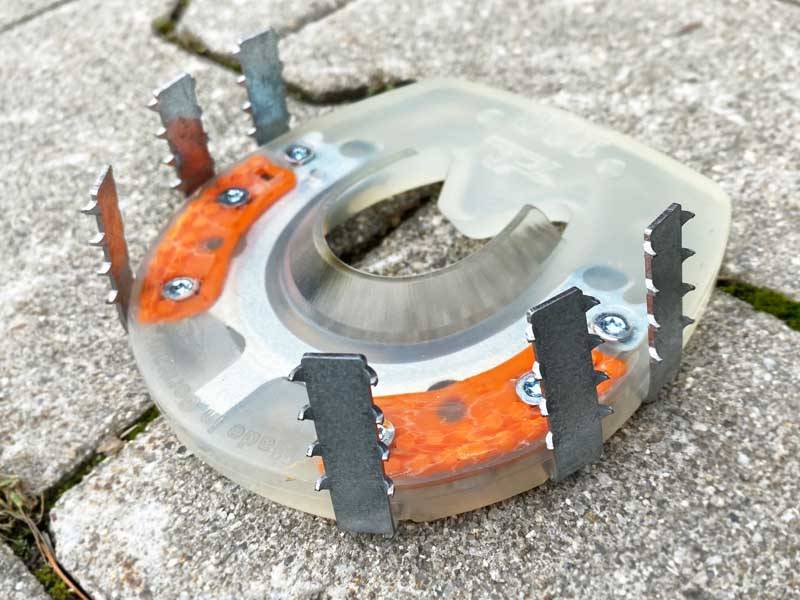
The prepared composite horseshoe for the hoof cast with our cast system.
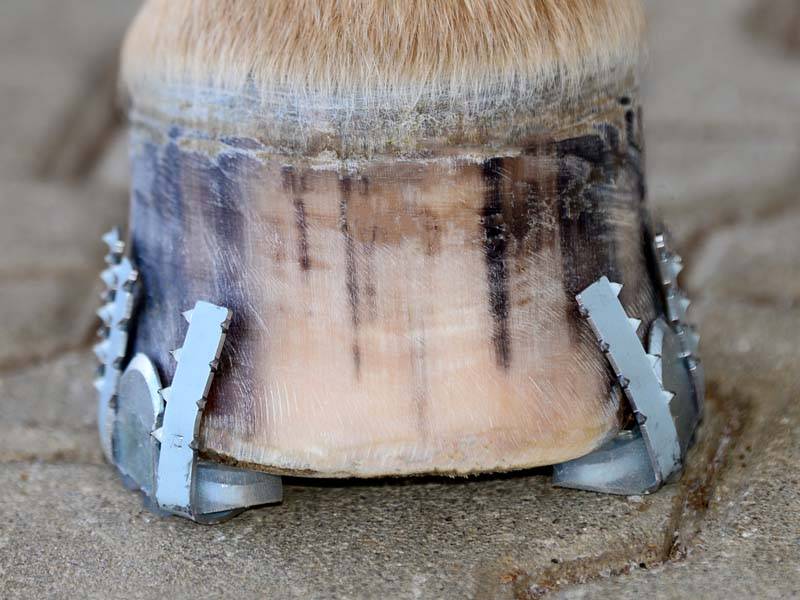
The cast horseshoe fitted onto the hoof prior to wrapping it with casting tape.
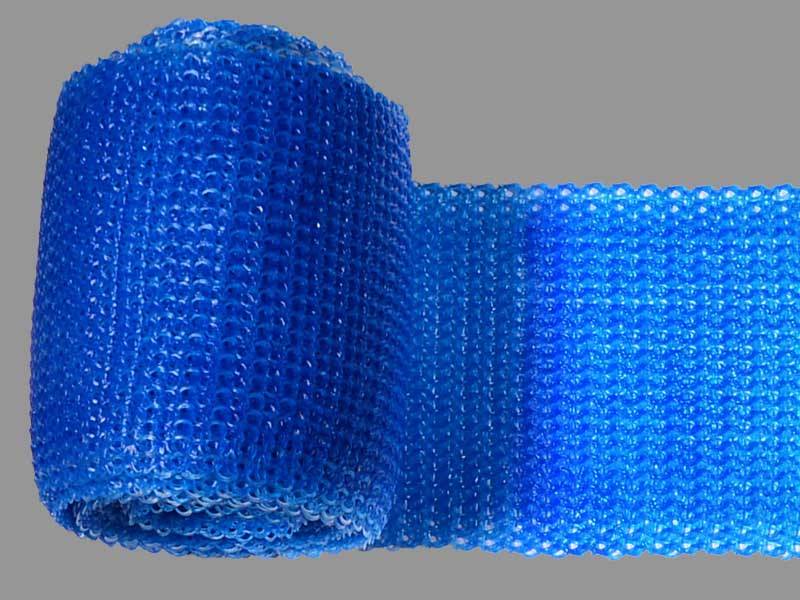
To apply the cast shoe, a synthetic fiberglass casting tape is needed, which is wrapped around the hoof over the cast hooks.
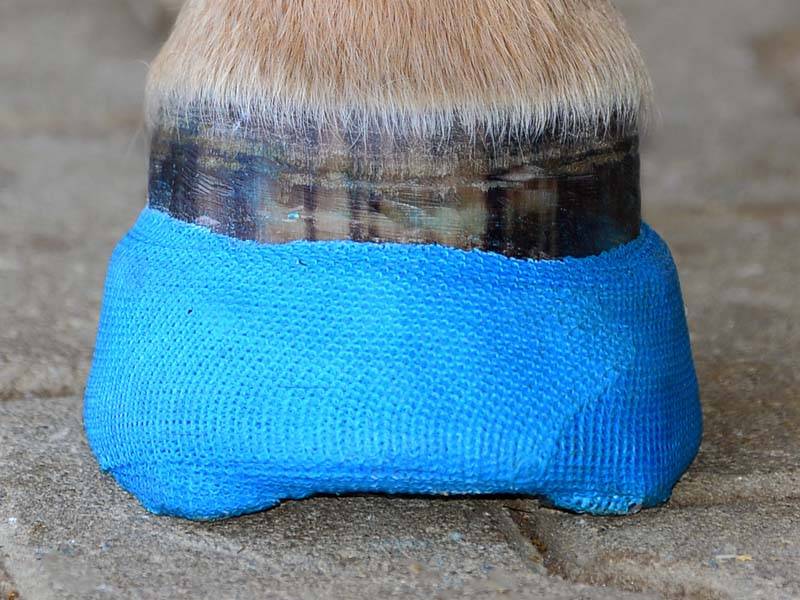
The finished cast shoe on the horse's hoof. Make sure that the coronary band and the heel bulbs remain uncovered.
Application and Safety Instructions for a Cast Horseshoe
Our products are not intended to diagnose or cure diseases. However, a cast shoe can be used as a supportive measure. It is important that an experienced professional supervises the application and makes adjustments as needed to ensure that the hoof receives appropriate protection and support.
Please read and follow our Safety Instructions for all work with our products, which are directed to both the farrier and the horse owner. When handling the cast hooks, please be aware that you could potentially cut yourself on the small spikes; therefore, we recommend wearing protective gloves. Please refer to the manufacturer's Information for Use when working with the casting tape (synthetic fibreglass cast).
Hoof Bandage with Casting Tape
A casting tape (cast wrap or bandage) is a synthetic support bandage made of fiberglass fabric impregnated with polyurethane resin. Once the resin comes into contact with water, it hardens within a short period. The casting bandage scores with its high flexibility, making it easy to wrap around the hoof. Its soft material allows for easy adaptation to the shape of the hoof. The result is a rigid, extremely stable, yet lightweight support bandage. The casting tape is characterized by good X-ray transparency, allowing monitoring of the healing process without the need for frequent changes of the hoof bandage.

In practice, it can happen that both are needed — a hoof bandage and a supportive horseshoe.
A casting tape can be used to
- create a hoof bandage in cases of hoof injuries.
- secure a composite shoeing in combination with our cast hooks. The cast hooks themselves have small metal spikes that grip firmly into the material of the casting tape, ensuring a secure hold.
- apply a steel shoe to the hoof, for example, by nailing it onto the casting tape.
In most cases, a cast shoe is used for therapeutic purposes.
The casting tape hardens upon exposure to water. Therefore, make sure not to damage the packaging — once the casting tape is exposed to air, it can harden due to humidity.
Cast Horseshoe
For a hoof cast with our cast system, you will need:
- The composite horseshoe suitable for the individual hoof situation of the horse. Each of our models with a sturdy metal core is suitable for use as a cast shoeing with our cast hooks.
- The required number of cast hooks. A cast strip consists of 9 cast hooks. Usually, you need 6 cast hooks per horseshoe.
- The required number of screws: One screw is needed per cast hook. We recommend the following screws for attaching the cast hooks to the composite horseshoe: DIN 7982 / ISO 7050 countersunk head self-tapping screws 4.2mm x 19mm.
- The casting tape — the "hoof bandage". You typically need one roll of synthetic fiberglass casting tape per hoof.
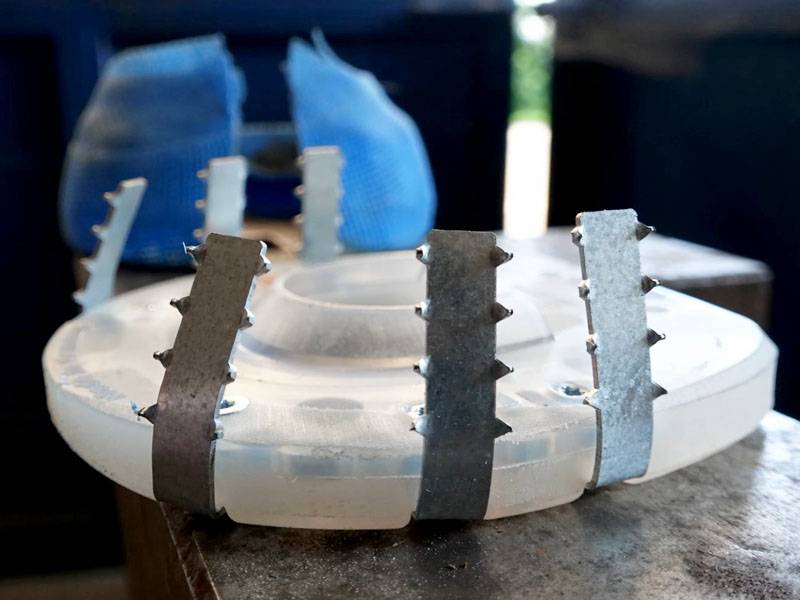
How Long Should a Cast Shoe Remain on the Hoof?
The main advantage of our hoof cast system is that the bottom side of the horseshoe is not covered by the casting tape, thus naturally extending the durability of the cast shoe. However, for completeness, we would like to point out that the duration of how long a cast shoe remains on the hoof should not depend on how long the cast shoe lasts, but rather on the specific hoof situation.
To avoid potential subsequent damages of immobilization, the correct timing of remobilization is important. The hoof mechanism and the horse's musculoskeletal system typically work perfectly together. However, if individual parts are immobilized, this can lead to an inappropriate biomechanical stress of other areas. Therefore, a cast bandage should be used very cautiously.
Please make sure to coordinate the duration of the hoof cast on the horse's hoof with the local professional or treating veterinarian.
Step-by-Step Application Guide:
Hoof Cast with Casting Tape, Cast Hooks and Composite Horseshoe
Preparing the Horseshoe for Application as a Cast Shoe
First, select the model that best suits the individual situation of the horse. All horseshoes with metal cores from our range can be used for the cast system. The currently available cast hooks are precisely tailored for all open-toed horseshoes; for the regular models, manual adjustments are still necessary from size 142mm onwards.
Choose the correct shape and size of the horseshoe and adjust it optimally to the horse's hoof. For more information, refer to 'FAQ Adjustment to the Hoof'. For a cast shoe, we recommend removing all knob arrays to achieve an optimal fit. This also applies to the softer knobs of the 'Nailless'.
The preparation of the bare hoof is essentially carried out in the same way as for any other horseshoe and requires professional execution.

Adjusting the horseshoe with the belt grinder.

Composite horseshoe with ground-off knob arrays.
Attaching the Cast Hooks to the Horseshoe
Put the screws into the nailing slots of the composite horseshoe, beginning on the hoof side. Put the cast hook on the screw on the bottom side of the horseshoe.
Tighten the screw with a cordless screwdriver until it is countersunken in the hoof side of the horseshoe.
Remove the protruding screws with an angle grinder. Take appropriate safety precautions and consider that there may be sparks.
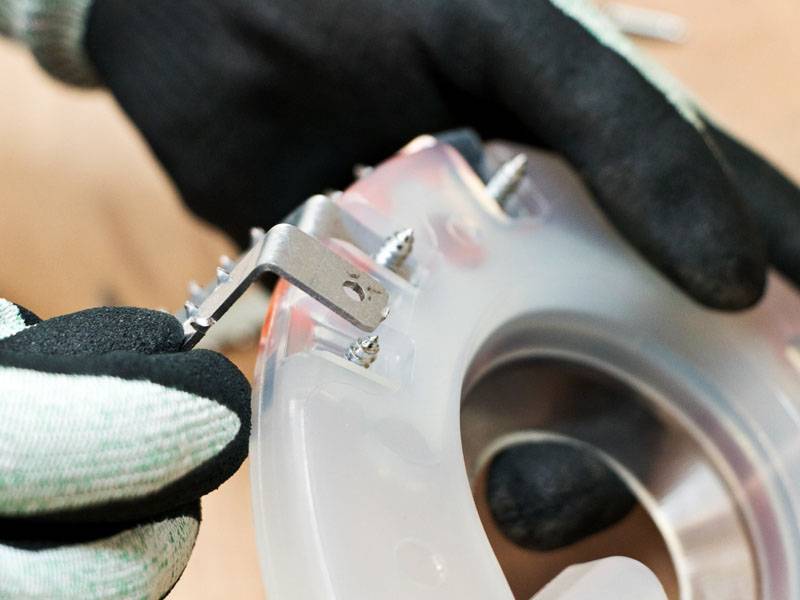
Application of the cast hooks on the horseshoe.
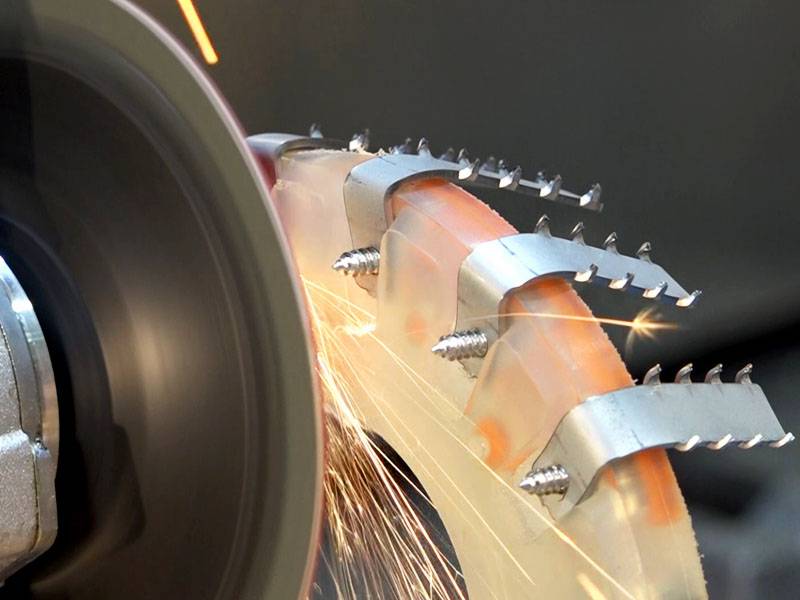
Removal of the protruding screws.
Applying the Cast Shoe to the Horse's Hoof
When all hooks are fixated on the horseshoe, pre-stress them and place the horseshoe on the hoof. With correct application, the cast shoe will now stay in the right position on the hoof by itself. When the composite horseshoe is optimally placed on the hoof, you can wrap the hoof with the cast bandage. Have another person lift the horse's opposing hoof so the horse will keep still.
When working with the casting tape, be sure to wear gloves and ensure the hoof is clean and dry.
The coronary band and the heel bulbs must remain uncovered!
Put the hoof down and let the cast harden.
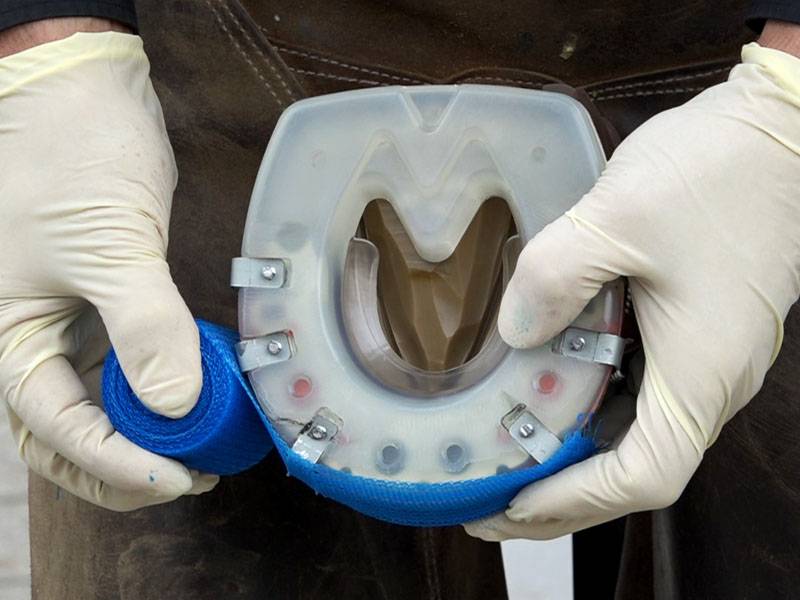 Wrapping with the cast bandage.
Wrapping with the cast bandage.

Hoof cast on the horse's hoof.
Removing a Cast Horseshoe
Use a utility knife with hook blade and observe the common safety precautions for utility knives. We advise against using a regular utility knife as it could lead to injuries. Carefully cut the cast bandage in the toe area from top to bottom.
Now it should be possible to remove the cast shoe easily from the hoof. To do this, pull apart the cast bandage.
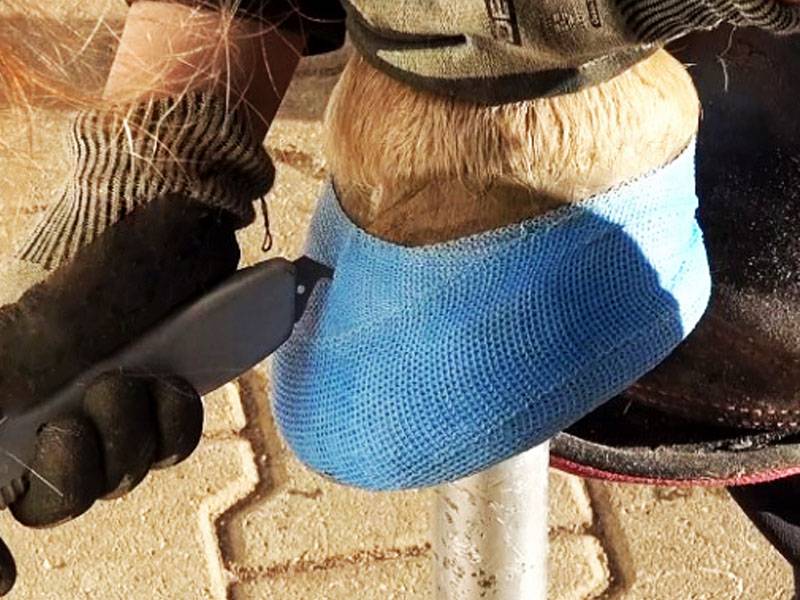 Cutting the casting tape.
Cutting the casting tape.
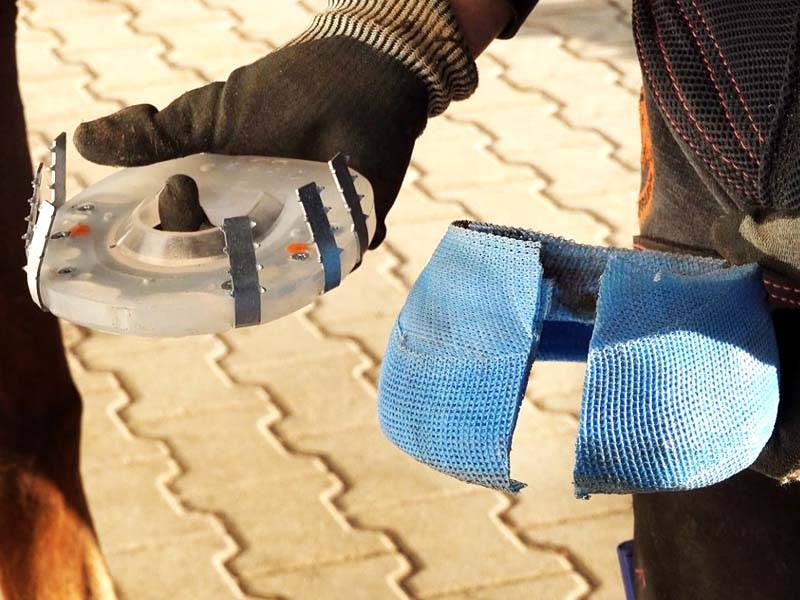
Cast shoe after removal.
Cast Hook Application in the Video
At this point, we would like to recommend two videos to you that explain the application of the cast system.
Video Shoeing Guide:
Hoof Cast with Composite Horseshoe, Cast Hooks and Casting Tape
Every product is only as good as its user. That's why we always try to provide you with all the information for the optimal use of our products. However, sometimes it's easier to see the application than to read a text.
On our YouTube channel, we have also provided a video demonstrating the application of the cast shoe for you.
Video Instruction:
How to Remove a Horseshoe
Especially in case of a cast shoe, we are often asked how the hoof cast can be removed at the end of the application period.
However, since there are not only questions about the cast shoe, but also general inquiries on this topic, we have put together a short video specifically addressing this matter.
Product Features — Cast Hooks
| Model | Cast Hooks |
|---|---|
| Additional Description | Hoof Cast, Cast Shoe |
| Brand | Duplo |
| Article Number | 000201 |
| Function | Immobilization, hoof protection, therapeutic shoeing, cast shoeing. A cast shoe is not intended for riding. |
| Therapy Shoe / Rehab | Cast hooks are also suitable for supportive use in the orthopedic and therapeutic field. We expressly point out that our products do not diagnose or cure any diseases. We advise for any use with a therapeutic or orthopedic background to work closely with the hoof specialist or veterinarian on site. |
| Application | In combination with a casting tape and a suitable composite horseshoe. |
| Security Advice | can be found under FAQ → Safety Information |
| Made in | Germany |
| Weight | approx. 65g |
| Measurements | Cast strip: 21.6cm x 3.5cm x 4.2cm Cast hooks (9 hooks per strip): 4.2cm x 1cm x 1.9cm |
| Necessary Equipment | screws — we recommend DIN 7982 / ISO 7050 Countersunk Head Tapping Screws 4.2mm x 19mm and casting tape |
| Hoof Mechanism | The hoof cast stabilizes and immobilizes the horn capsule. |
| Packaging Unit | by the piece |
| Shipment | within Canada — for worldwide shipments please contact the Duplo Team in Germany |
Product Features — Casting Tape
| Model | Casting Tape — synthetic fibreglass casting tape |
|---|---|
| Brand | Nobalite® |
| Article Number | 000250, 000251 |
| Function | cast shoe, hoof cast, hoof bandage, supportive bandage for hooves, hoof protection bandage, immobilization, hoof protection |
| Application | Please refer to the manufacturer's instructions for use. |
| Security Advice | can be found under FAQ → Safety Information |
| Width | 5cm and 7.5cm |
| Length | 3.6m |
| Necessary Equipment | gloves |
| Packaging Unit | by the piece |
| Shipment | within Canada — for worldwide shipments please contact the Duplo Team in Germany |


